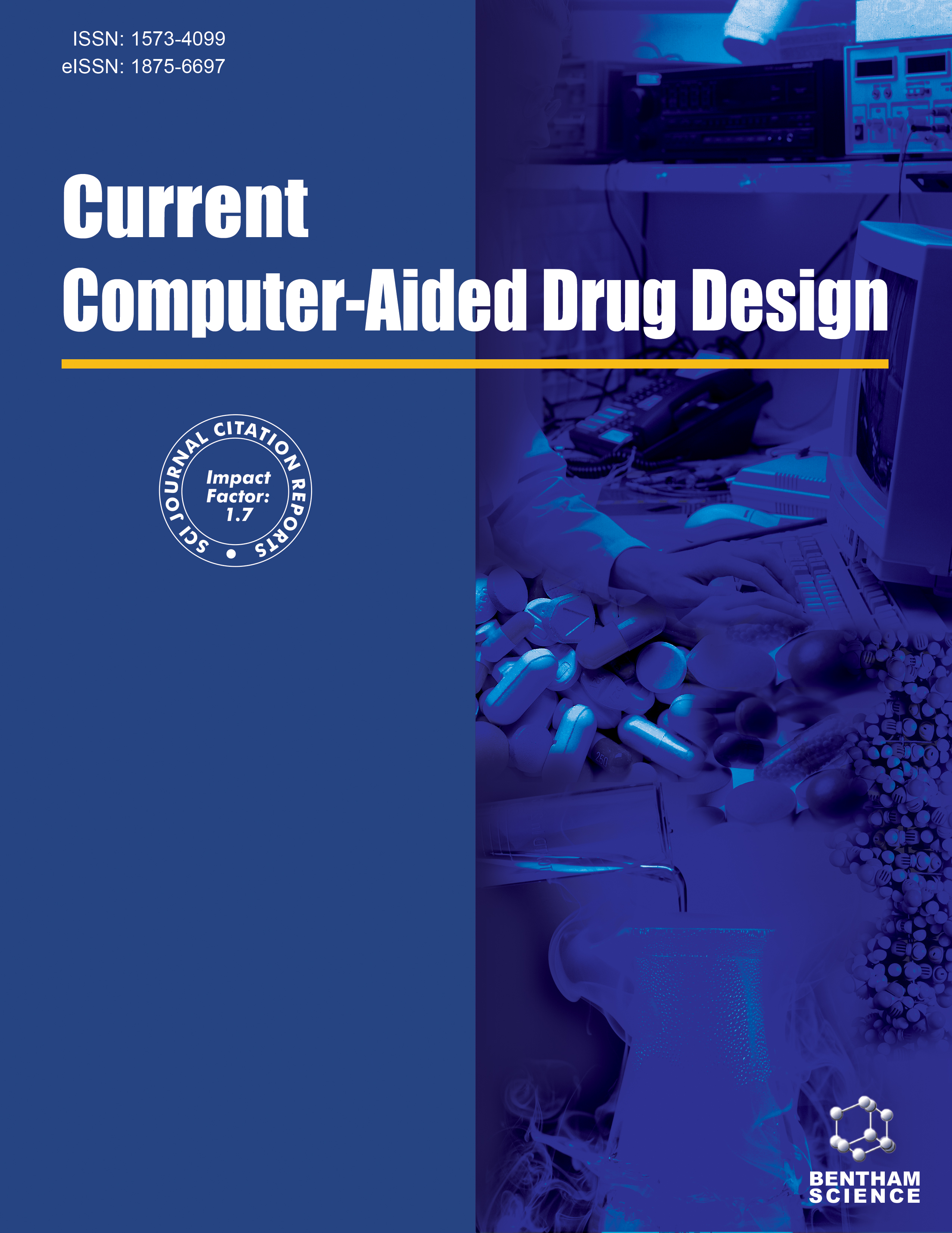- Home
- A-Z Publications
- Current Computer - Aided Drug Design
- Previous Issues
- Volume 6, Issue 3, 2010
Current Computer - Aided Drug Design - Volume 6, Issue 3, 2010
Volume 6, Issue 3, 2010
-
-
Applications of Current Proteomics Techniques in Modern Drug Design
More LessAuthors: Cheng-Cheng Zhang and Juergen KastProteins are currently the major drug targets and thus play a critical role in the process of modern drug design. This typically involves construction of drug compounds based on the structure of a drug target, validation for therapeutic efficacy of the drug compounds, evaluation of drug toxicity, and finally, clinical trial. Proteomics, defined as the comprehensive analysis of the proteins that are expressed in cells or tissues, can be Read More
-
-
-
Modeling the Interactions Between α1-Adrenergic Receptors and Their Antagonists
More LessAuthors: Lupei Du and Minyong LiAs crucial members of the G-protein coupled receptor (GPCR) superfamily, α1-adrenergic receptors (α1-ARs) are recognized to intervene the actions of endogenous catecholamines such as norepinephrine and epinephrine. So far three distinct α1-AR subtypes, α1A, α1B and α1D, have been characterized by functional analysis, radio-ligand binding and molecular biology studies. The α1-ARs are of therapeutic interest be Read More
-
-
-
Metabolomics of Medicinal Plants: The Importance of Multivariate Analysis of Analytical Chemistry Data
More LessMetabolomics, the comprehensive and global analysis of diverse metabolites produced in cells and organisms, has greatly expanded metabolite fingerprinting and profiling as well as the selection and identification of marker metabolites. The methodology typically employs multivariate analysis to statistically process the massive amount of analytical chemistry data resulting from high-throughput and simultaneous meta Read More
-
-
-
Computational Prediction of DNA-Protein Interactions: A Review
More LessAuthors: Xue-Mei Ding, Xiao-Yong Pan, Chen Xu and Hong-Bin ShenThe interaction between DNA and proteins comprises a pivotal role in almost every cellular process, including gene regulation and DNA replication. Given a protein, it is very important to know whether it is a DNA-binding protein or not and where the binding sites are. Over the last three decades, since the discovery that lac operon was regulated by a protein, knowledge of the DNA-protein interactions has soared. However, it is ver Read More
-
-
-
oa Conformational Flexibility in Designing Peptides for Immunology: The Molecular Dynamics Approach
More LessComputational modeling techniques and computer simulations have become a routine in biological sciences and have gained great attention from researchers. Molecular dynamics simulation is a valuable tool towards an understanding of the complex structure of biological systems, especially in the study of the flexibility of the biological molecules such as peptides or proteins. Peptides play a very important role in human physi Read More
-
Volumes & issues
-
Volume 21 (2025)
-
Volume 20 (2024)
-
Volume 19 (2023)
-
Volume 18 (2022)
-
Volume 17 (2021)
-
Volume 16 (2020)
-
Volume 15 (2019)
-
Volume 14 (2018)
-
Volume 13 (2017)
-
Volume 12 (2016)
-
Volume 11 (2015)
-
Volume 10 (2014)
-
Volume 9 (2013)
-
Volume 8 (2012)
-
Volume 7 (2011)
-
Volume 6 (2010)
-
Volume 5 (2009)
-
Volume 4 (2008)
-
Volume 3 (2007)
-
Volume 2 (2006)
-
Volume 1 (2005)
Most Read This Month
Article
content/journals/cad
Journal
10
5
false
en


